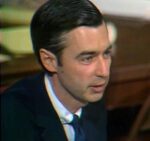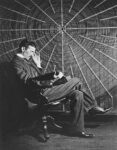Today’s protagonist was called ‘the highest, [and] the culminating point that beauty has attained in the sphere of music’. Or even “The musical Christ”
These opinions do not come from just any classical music enthusiast, but from some guy called Tchaikovsky, who knew one thing or two about composition. He was referring to Wolfgang Amadeus Mozart, possibly the greatest musical genius to ever grace our ears and souls.
Here at Biographics, we admit that we don’t have the necessary knowledge to analyze in depth Mozart’s compositions. We will do our best however to cover his short, yet incredibly eventful life … and we will also debunk a couple of myths along the way.
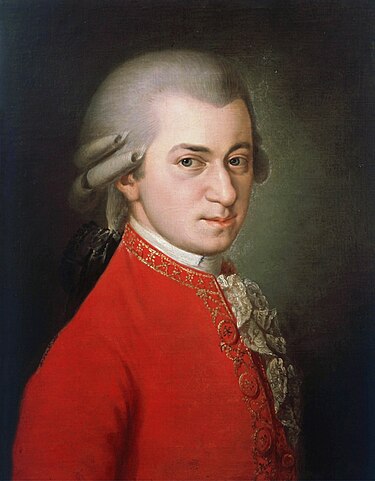
Young Prodigies
Wolfgang Amadeus Mozart was born in Salzburg on January 27, 1756. He was the seventh child of Anna Maria and Leopold, composer for the local prince-archbishop, Count Schrattenbach.
The Prince-Archbishopric of Salzburg was one of many small sovereign states within the Holy Roman Empire, and an extremely wealthy one. The environment may have been provincial compared to other large European capitals, but arts and music enjoyed the patronage of the court.
Leopold soon realized that ‘Wolferl’ was endowed with an extraordinary musical talent. At the age of three, he could play his first pieces on the piano. At four, the violin.
Wolferl’s sister, Nannerl, displayed similar abilities. Soon, Leopold was dedicating most of his energies to developing their natural skills.
The boy appeared to be the most gifted of the two, absorbing musical theory with much appetite and little effort. Under Leopold’s loving but inflexible guidance, Wolferl composed his first piano concerto aged four, followed by a minuet and a trio for keyboard at six.
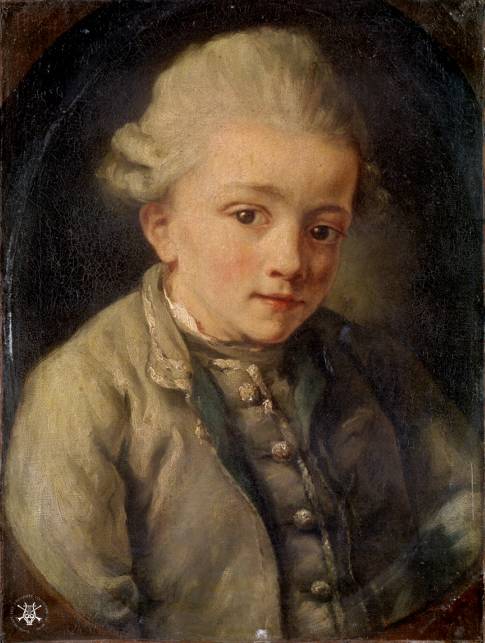
In between those two stages, the young Mozart discovered the joys of singing and performing live.
In 1761, the five-year old had a minor role in the musical drama ‘Sigismund King of Hungary’. This first experience of the theatrical stage may have influenced his love of opera in later life. Around this time, Leopold realized that Salzburg was too small for Wolferl and Nannerl. The dad became an impresario and planned a trip to the Imperial Court in Vienna, in October of 1762.
Emperor Francis I and Empress Maria Teresa welcomed the tiny performers at their lavish Schoenbrunn Palace. Maria Teresa was astonished at Wolfgang’s skills, spoiling him with compliments and presents. To express his gratitude, the boy jumped on the Empress’ lap and kissed her.
But the Emperor wanted to challenge the boy even further. He asked him to play with the piano keys covered by a screen, and then to play using only one finger.
Wolfgang accepted – and won the challenge! Now a celebrity, the boy became a sort of mascot for the ladies at court.
One day he was strolling with two Archduchesses, when he slipped to the floor. One of the ladies lifted him and spoke kindly to soothe his ‘booboo’. Wolferl told her “You are a dear good lady, and you shall be my wife”
That good lady was Marie Antoinette, the future Queen of France.
Taking Europe by Storm
Leopold had hit upon a winning idea.
Courts around Europe would pay good money to see his children perform! From then on, the Mozarts continued their triumphal, albeit exhausting tour of Europe. Leopold’s tactics may appear akin to exploitation of child labor. But it appears that his children, and especially Wolfgang, greatly enjoyed their travels and their performances.
For the future composer, they were also an occasion to hone his skills and explore new musical genres. So, in 1763 Leopold, Wolferl, and Nannerl toured Germany, then France. In April of 1764 they reached London, where George III, a competent musician, heaped praise on the boy.
The prodigy came under the attention of lawyer Daines Barrington, who challenged him to improvising two Arias in the popular style of Italian Opera. After a short moment of reflection, Wolfgang hammered at the harpsichord, delivering both a ‘Love Song’, and a ‘Song of Rage’.
The anecdote proves how the young talent could effectively internalize the standard conventions of popular genres of the time. And according to musicologist John Rice, this may be the first time Amadeus performed in the operatic style.
The Tour resumed with stops in Flanders, France, Switzerland, and Salzburg before the Mozarts returned to Vienna in 1768.
The new emperor, Joseph II commissioned the 12-year-old Mozart to compose an opera, ‘La Finta Semplice’. As with many compositions of this kind, the libretto, or script, was written in Italian. The work attracted the praise of the undisputed Italian master of librettos, Pietro Metastasio. Not bad for a pre-teen.
But the hype around the opera attracted the envy of other composers and impresarios in the Imperial entourage. Due to their scheming, the opera did not reach the stage.
But Leopold and Wolfgang had set their minds on conquering the operatic world. To do so, they had to take by storm the cradle of lyrical theater, Italy.
A Magical Ring?
In December of 1769, they crossed the Alps for a tour of Northern Italy, where Wolfgang continued to impress audiences with his operatic improvisations. According to a newspaper published in Verona: “Four verses were submitted to him, on which he composed on the spot an aria in the best taste, in the very act of singing it”
Eventually Wolfgang received another commission for an opera. At the age of 14, he saw his ‘Mithridates, King of Ponto’ opening in Milan, to rave reviews.
The success was quickly followed by another Milanese debut, ‘Ascanio in Alba’.
The Italian tour continued from strength to strength.
While in Bologna, he attended the lessons of Giambattista Martini, a master in counterpoint, or the art of combining different melodic lines in a musical composition. Martini was impressed, and he encouraged Mozart to take the entrance exam for the Philharmonic Society.
He was given a musical theme and was instructed to build a fugue for four instruments around it. A fugue is a composition where a theme is introduced at the beginning, and then repeated at different pitches.
Half an hour later, Wolfgang had completed the composition, performed it, and bagged his diploma. Next stage of the tour: Rome and the Vatican, where Wolfgang performed another stunt. He attended a performance of a choral work, a Miserere by Allegri. No printed copies of the composition existed, and the Pope himself had forbidden for it to be transcribed.
But he memorized the entire score, and put it to paper in secret, after the performance. The next day he played and sang it flawlessly to an audience of gasping musicians. He was now the talk of Rome, although some envious souls gossiped that his talents lay in a magical ring, a sort of talisman he wore all the time.
Easy peasy, lemon squeezy, our genius removed the ring and proved that he could still rock those ivory keys.
No magic involved, what a surprise (!)
The triumph was now complete: young Mozart was granted an audience with Pope Clement XIV, who appointed him Knight of the Order of the Golden Spur.
Back in Salzburg
In the spring of 1772, Mozart returned to Salzburg, looking for permanent employment. He found it at the court of the new prince-archbishop, Count Colloredo, who hired him as concertmaster with a rather low salary of 150 guilders.
The composer was not over the moon, yet these were productive years: the musician penned further operas and his first piano concerto. He also perfected his technique, as he studied the works of Joseph Haydn and the Imperial court composer Antonio Salieri.
Let me take a break here.
Antonio Salieri is remembered by most as the ‘Saint Patron of Mediocrity’, a fashionable composer whose work did not stand the test of time. Consumed by jealousy, he was embroiled in a bitter rivalry against Mozart. A feud which resulted in Salieri accelerating Mozart’s death.
At least, that’s the plot of the film ‘Amadeus’ by Milos Forman. Which is based on the play of the same name, by Peter Shaffer. Which is based on the work ‘Mozart and Salieri’ by Alexander Pushkin.
Which is based on hogwash and codswallop.
Bull manure.
Bollocks.
I will get to this later, but rest assured that the two composers largely respected each other, and that our friend Antonio never killed anyone. In 1777, the only one who had a beef with Mozart was his employer, Count Colloredo. Unappreciative of his compositions, and operating on a tight budget, the Prince of Salzburg laid off his concertmaster.
Now aged 21, Mozart set off on a new voyage, in search of patronage. This time his father had to stay and work in Salzburg, so mum Anna Maria was to accompany the musical marvel.
How would Wolfgang fare without Leopold’s invasive yet steadying influence?
‘Dear dad, I’m doing great (not)’
In 1777 and 1778 Wolfgang and mum sought work in Augsburg, Munich and Mannheim, but work remained elusive.
There are many reasons for this.
First, Wolfgang had grown into a playful, yet exceedingly confident young man. A confidence which bordered in arrogance. He lacked the diplomacy to function at an aristocratic court, and spoke his mind to wealthy patrons. This resulted in him being snubbed in favor of more accommodating rivals.
The second surprising reason is that Mozart was going through a massive composer’s block. In 1777 and 78, he would write to his father that he was working on numerous projects, and that he and Anna Maria were living ‘like royalty’ to the point that he had ‘grown slightly fat’.
But not as fat as the fib he was telling dad!
The musician was going through exceptional difficulties in writing new pieces! For example: In late 1777, Mozart had been commissioned three flute concertos by a Dutch patron.
After trudging through the first composition, he got stuck. Urged by his father to honor the contract, Mozart simply retrieved a previous work – an oboe concerto – and changed the solo part to that of a flute! But he never managed to deliver the third concerto, and he had to forfeit the substantial payment of 200 guilders.
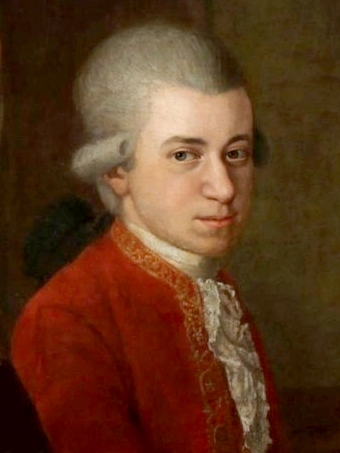
Mozart’s ‘flutegate’ debunks the myth that the composer could crank out new music effortlessly and would conceive entire new works in his head, before transcribing them without revisions or afterthoughts.
The myth originates from a letter attributed to Mozart, published by magazine editor Johann Rochlitz decades after his death. In this letter, he claims “the whole [piece], though it be long, stands almost finished and complete in my mind, so that I can survey it, like a fine picture or a beautiful statue, at a glance”
So, Mozart’s music came from a higher plane and reached his mind fully formed, through a stroke of divine inspiration.
No, it didn’t.
The letter was a forgery. The secret to Mozart’s genius was constant practice, study, repetition, practice, revision, more study, and more practice, from a very early age. Even if he conceived his main themes in his head, Mozart still had to sit at the keyboard to refine them, work out variations, accompaniment, and orchestration.
A long, back-breaking, mind shattering process which day after day was bound to cause mental fatigue.
By his own admission, Mozart struggled the most with string quartets. When writing an orchestral piece for example, he would first create the main theme for the main treble instrument. Next, he nailed the bass lines, and finally the inner parts and orchestrations.
But when tackling a quartet, he wrote the four parts at the same time, bar by bar, placing a great deal of effort in building a complex counterpoint. This is what made him sweat the most!
Wolfgang Amadeus Mozart was an exceptionally talented and hard-working human, but a human after all.
And as any other 21-year-old, he was prone to another source of distraction.
After Germany, Anna Maria and Wolfgang were due to visit Versailles. But the trip was thwarted when Mozart met the first great love of his life: the young and beautiful singer Aloysia Weber. He followed her in a tour to The Hague, and even supported her family financially, to Leopold’s increasing concern.
Dad sent Anna Maria to retrieve him and the two finally set off for Paris.
But their French experience was a terrible one. They were expecting to be welcomed at court, but all Mozart could find were some teaching jobs. He could only afford a sleazy hotel.
As they spiraled into poverty, Anna Maria fell gravely ill and eventually died on the 3rd of July 1778.
Things Pick Up Again
As if the death of his mother was not enough, Mozart was rebuffed by Aloyisia, whose career was on an upward trajectory. This period was one of the composer’s darkest hours, but it also contributed to developing his maturity, on a personal and professional level.
According to author David P. Schroeder, because of these ordeals, Mozart would impart a clear, mature footprint on the plot, characters, and narrative of his later operas – as opposed to just the music, as expected from a composer.
Thankfully, Leopold came to the rescue: he secured Wolfgang another post at the Salzburg court in 1779, which in turn, earned him new work. In 1780, Mozart composed his best opera so far, ‘Idomeneo King of Crete’, which attracted the attention of the Court in Vienna.
Wolfgang returned to the Austrian capital in 1781, and to save on rent money, he lodged with the Webers. It was at their home that he met Aloysia’s sister, Costanze.
The composer was smitten. He had to marry the girl!
On one hand, he did not dare inform his father, as Leopold considered the Webers below his standing.
On the other hand, Costanze’s mother pressured them to formalize their affair.
But before tying the knot, Mozart had business to do. In July of 1782, he completed one of his most famous operas “The Abduction from the Seraglio.”
This exotic work, set in the Ottoman Empire, is the first opera in which Mozart left his mark on the plot and characters. He established certain recurring elements, such as the complexity of the female characters, who were better developed than their male counterparts; and the dramatic action never resolving into a fully positive outcome.
Even off-stage, the outcome was not as positive as expected: despite the success and rave reviews, Mozart received a reduced fee of 100 guilders, not enough to grant financial security.
Nonetheless, Wolfgang and Costanze got married on the 4th of August in St Stephen’s Cathedral.
Dream Team
In June of 1783 the Mozarts welcomed their first child, Raimund Leopold. Sadly, he died in August. The couple went on to have five more children, but only two survived infancy. The grief of losing so many children weighed on Costanze, already beset by chronic ulcerated varicose veins.
Wolfgang needed cash to pay the medical bills, as well as to sustain a lifestyle which was well beyond his means. Thus, he plunged into one of his most productive periods, earning at least 460 guilders a year.
But Mozart was still not satisfied. He was craving for new material to compose his next opera, but the narrative and musical conventions of the time did not provide for exciting inspiration. Librettists of the time also complained about the fact that the musician wanted to meddle in their ‘realm’, criticizing and rewriting their scripts.
The right occasion arrived when Mozart met Lorenzo Da Ponte, a librettist who had already worked for Salieri.
Da Ponte had previously worked with Salieri, so the Italian court composer may have held some grudge against the younger rival for poaching his star librettist.
But that grudge never developed into the quasi-homicidal hatred portrayed in theater and film.
Actually, Salieri had a very good chance to get back at Mozart and Salieri.
In 1786, Joseph II challenged Mozart and Salieri to knock their operatic socks off at a special event: a double feature show, in which two one-act operas would be performed one after the other. The audience would crown their favorite performance!
Mozart’s piece was ‘The Impresario’, a musical comedy … about the production of a musical comedy! How ‘meta’. Salieri composed a stage, a more ambitious piece, an opera set in the world of opera! Again, how meta!
At the end of the evening, Salieri was crowned the winner by the emperor and the audience.
So why would he hold a grudge beyond that? In any case, Salieri was always the most successful and better remunerated of the two rivals. The two respected each other’s music, Salieri frequently directed Mozart’s compositions and was even happy to hand over projects to Wolfgang when he was too busy.
So, Mozart and Da Ponte really needn’t worry about Salieri scheming in the shadows.
The first collaboration of this “dream team” is, in my humble opinion, Mozart’s finest work: ‘Le Nozze di figaro’, or ‘The Marriage of Figaro’. The source material was a comedy by French playwright Beaumarchais.
It had a revolutionary subtext, as it pits the commoner Figaro against the lustful Count of Almaviva. Mozart and Da Ponte toned down the anti-aristocratic themes to avoid censorship, but their work was still revolutionary – at least in musical terms!
And yet, the Viennese premiere on May 1, 1786 left the audience puzzled. The work was too complex, too ahead of its time.
But Mozart was invited to perform the opera in Prague. Here, the success was phenomenal! The piece remained on stage for three weeks without break, and Mozart was rewarded with 1,000 guilders!
The Prague scene commissioned another opera to Mozart and Da Ponte, the ‘Don Giovanni’.
Before it was completed, Leopold Mozart died, on May 28, 1787.
Life is Harder than a Quartet
Throughout his life, Leopold had been a constant presence in Wolfgang’s life. He had been his teacher, his manager, and even his friend and confidante.
It was evident that Leopold’s influence was always at risk of becoming overbearing. The father worried genuinely that his son could squander his talents, while courting a singer, playing billiards, or drinking heavily. In later years, Leopold was more worried that Wolfgang simply squandered his own fortune, as he lived well beyond his means!
While Wolfgang appreciated Leopold’s advice, he had actively kept him at a distance, to protect his independence.
The composer poured his grief and unresolved issues onto his new composition.
The unrepentant seducer Don Juan can be considered as a proxy for Wolfgang. The libertine is eventually dragged to hell by an authoritative, paternal figure: the murdered father of one of his conquests, who returns as a ghost.
Again, the reception was terrific, and so was the pay. But Wolfgang and Costanze were now living beyond their means, and debts were accumulating. Not even the long-coveted appointment as imperial court composer, in December 1787, could help in balancing the books.
In 1788 and 1789, the struggling Mozart accepted the help of a fellow Freemason, Prince Lichnowsky.
The Prince organized a tour in Dresden and Berlin, but the German speaking world was less appreciative than Czech audiences. Eventually, the Prussian court offered a lucrative fee for a series of string quartets. But as we know, these did not come easy to Mozart, and he never completed the work.
The composer returned to Vienna, and to Costanze, in July of 1789. The couple welcomed their fifth child, but the baby girl survived only a few hours.
Costanze fell ill again, and the cost of treatments further weighed down on the family finances.
A Requiem for Himself
During those difficult days, Mozart finally had a break: the emperor himself, Joseph II, had commissioned a new opera from him and Da Ponte, ‘Cosí Fan Tutte’ or ‘Thus Do They All’. It premiered on the 26th of January 1790, but the emperor was not in attendance, already ill with tuberculosis. He died shortly afterwards, and his brother Leopold II ascended to the throne.
The new monarch was more conservative and less musically inclined.
In 1791, Mozart could not hope for any patronage from the court. With Costanze being treated in Baden, he felt depressed and lonely.
But he still had some friends.
One of them was singer, author, and Freemason brother Emanuel Schikaneder, and he had an idea. How about the two of them dabbled into a popular genre of the time, the ‘magical opera’ in German language? Wolfgang accepted the gauntlet, and the result was ‘The Magic Flute’. The opera outwardly presents itself as something of a fairy tale, but it is imbued with freemasonic symbolism and humanistic ideals.
Musically speaking, it is of course several notches above the magical operas of the time. The compositions are wildly imaginative, complex yet catchy and feature the astonishing Aria of the Queen of the Night.
The Magic Flute premiered on September 30, 1791. Iit became a huge success. One, alas, that Mozart could not fully enjoy. That summer, Costanze had returned home in better health, but it was now Wolfgang who was deteriorating.
He was beset with rheumatism, swelling, fevers and a persistent depression.
Moreover, he was overworked.
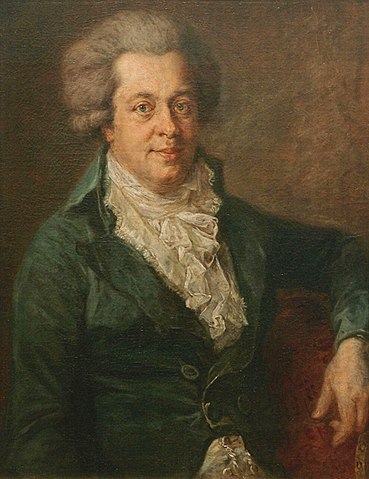
“Edlinger Mozart”, ca. 1790, published in 2000, though its authenticity has not been proven.
Whilst composing the Magic Flute, he had to accept the commission for another opera: ‘La Clemenza di Tito’. This was a project he could not refuse: the libretto was by his idol Metastasio and the patron was … Leopold II!
Not so much of a music hater after all, the emperor required the opera for his coronation in Prague.
Moreover: Mozart owed a large sum to Lichnowsky, and he needed the job!
Mozart accepted a further request by an anonymous messenger: the masked, cloaked stranger required Mozart to compose a Requiem – the music to a funeral mass. Wolfgang interpreted this as a sign of approaching doom. He was seriously convinced he was being poisoned! As he wrote in a letter “I know I have to die… I write (the requiem) for myself.”
By the way, the mysterious patron was not Antonio Salieri, as portrayed in the Amadeus play and film. He was an amateur composer, Count Franz Walsegg-Stuppach, who intended to present the Requiem as his own composition.
And nobody was poisoning Mozart!
To date, there are more than 130 theories on what exactly was the composer’s illness, ranging from mercury poisoning to syphilis. A 2009 study found that the mortality of young males in Vienna was well above average in 1791 and 1792. This may be linked to an epidemic of Streptococcal infection which caused kidney failure.
So, that may be the cause, and is compatible with Mozart’s symptoms.
By November of 1791, he was confined to bed, feverish, swollen and drained of energy. His conditions worsened on the evening of December 4, and he called for his doctor. When the physician drew some blood, the composer lost consciousness.
At 1am on the 5th of December, Wolfgang Amadeus Mozart died, aged 35.
A life cut too soon. He left behind an unfinished Requiem.
As per funeral regulations of the time, he was buried with very little ceremony, in a grave shared with four other bodies.
His final resting place has never been identified.
I feel like discussing his legacy is superfluous. What I would like to stress again is how Wolfgang Amadeus Mozart achieved apparent effortless purity and beauty in his music. As Albert Einstein put it “one feels he merely found it, that it has always existed as part of the inner beauty of the universe waiting to be revealed.”
But what he achieved, he did from a state of constant practice, inner struggle, and personal turmoil.
SOURCES
LIFE
http://www.mozart.com/en/timeline/life/birth-family-and-childhood-salzburg-austria/
http://www.mozart.com/en/timeline/work/apollo-and-hyacinth/
- B. M. Measor. “Incidents in the Life of Mozart.” The Musical Times and Singing Class Circular 14, no. 322 (1869): 295–97
https://www.jstor.org/stable/pdf/3353093.pdf
Heartz, Daniel. “Mozart and Da Ponte.” The Musical Quarterly, vol. 79, no. 4, Oxford University Press, 1995, pp. 700–18
http://www.jstor.org/stable/742381
Mozart and Salieri
https://www.theguardian.com/music/2003/dec/19/classicalmusicandopera.italy
CREATIVE PROCESS AND STYLE
‘Mozart’s Piano Music’ by William Kinderman ISBN-13: 9780195100679
https://oxford.universitypressscholarship.com/view/10.1093/acprof:oso/9780195100679.001.0001/acprof-9780195100679-chapter-6
David P. Schroeder, ‘Mozart’s Compositional Processes and Creative Complexity’
https://dalspace.library.dal.ca/bitstream/handle/10222/63147/dalrev_vol73_iss2_pp166_174.pdf?sequence=1&isAllowed=y
Webster, James. “Mozart’s Operas and the Myth of Musical Unity.” Cambridge Opera Journal, vol. 2, no. 2, Cambridge University Press, 1990, pp. 197–218,
http://www.jstor.org/stable/823682
Rice, John A. “Mozart on the Stage.” Proceedings of the American Philosophical Society, vol. 152, no. 2, American Philosophical Society, 2008, pp. 179–88
http://www.jstor.org/stable/25478485
https://www.invisionapp.com/inside-design/mozart-creative-success/


